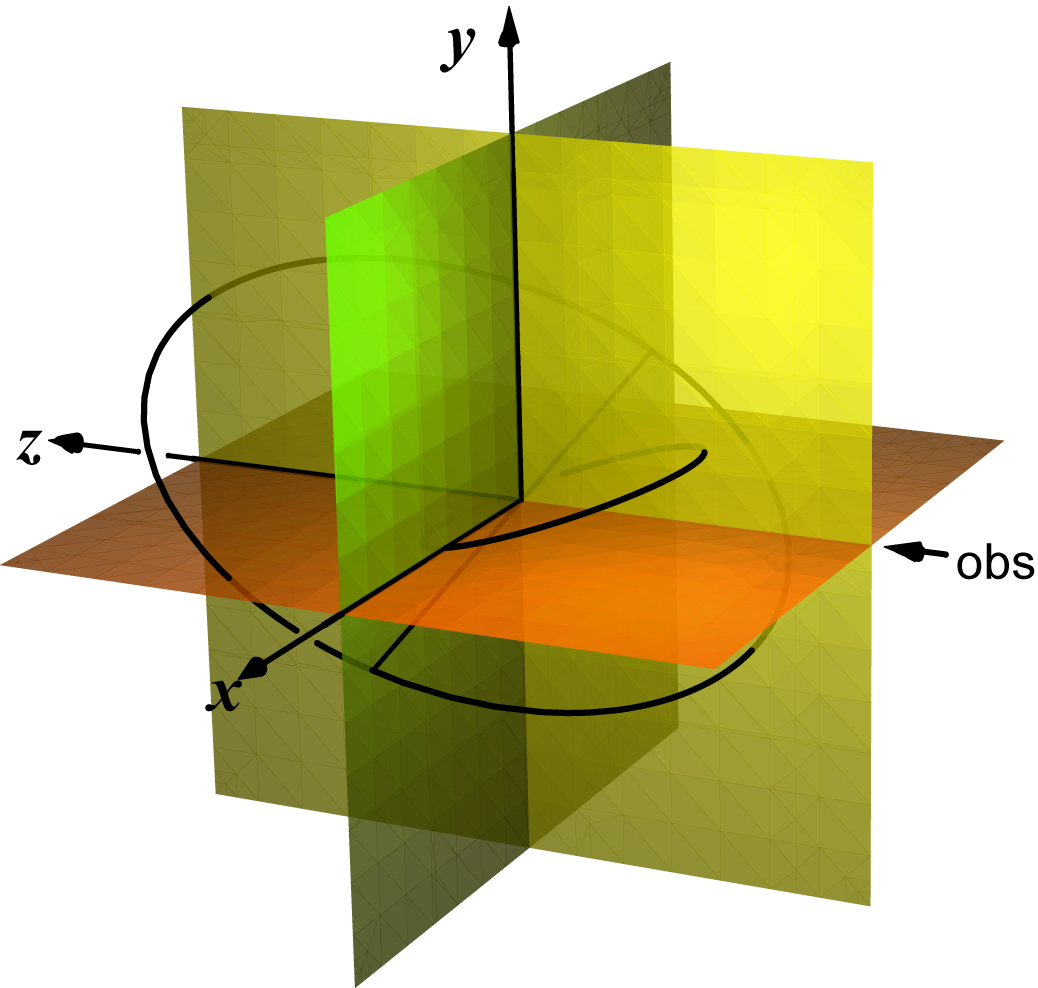Fig. 1

Geometry of the problem. The plane of the sky is the plane of reference of the orbits, which we choose to be the (x, y) plane. The observer looks toward the positive z-axis, the center of mass of the system being at the origin of coordinates. A transiting planet (small ellipse) has an inclination close to 90°, that is, it has an orbit almost perpendicular to the plane of the sky. Another planet (big ellipse) perturbs it. The ascending node of the transiting planet defines the x-axis on the plane of the sky; the line of the nodes of the other planet is marked with a black segment on this plane.
Current usage metrics show cumulative count of Article Views (full-text article views including HTML views, PDF and ePub downloads, according to the available data) and Abstracts Views on Vision4Press platform.
Data correspond to usage on the plateform after 2015. The current usage metrics is available 48-96 hours after online publication and is updated daily on week days.
Initial download of the metrics may take a while.


